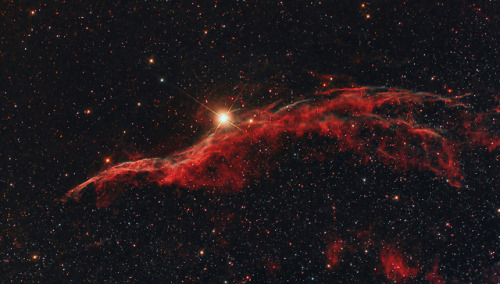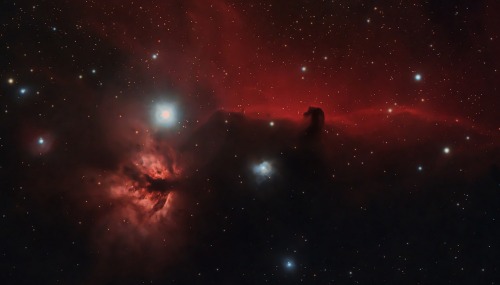More Than Just Drawings
More Than Just Drawings
Artist and graphic designer Mike Okuda may not be a household name, but you’re more familiar with his work than you know. Okuda’s artistic vision has left a mark here at NASA and on Star Trek. The series debuted 50 years ago in September 1966 and the distinctive lines and shapes of logos and ships that he created have etched their way into the minds of fans and inspired many.
Flight Ops

The Flight Operations patch has a lengthy history, the original version of which dates to the early 1970s. Having designed a version of the patch, Okuda had some insights about the evolution of the design.
“The original version of that emblem was designed around 1972 by Robert McCall and represented Mission Control. It later changed to Mission Operations. I did the 2004 version, incorporating the space station, and reflecting the long-term goals of returning to the Moon, then on to Mars and beyond. I later did a version intended to reflect the new generation of spacecraft that are succeeding the shuttle, and most recently the 2014 version reflecting the merger of Mission Operations with the Astronaut Office under the new banner Flight Operations.”
“The NASA logos and patches are an important part of NASA culture,” Okuda said. “They create a team identity and they focus pride on a mission.”

In July 2009, Okuda received the NASA Exceptional Public Service Medal, which is awarded to those who are not government employees, but have made exceptional contributions to NASA’s mission. Above, Okuda holds one of the mission patches he designed, this one for STS-125, the final servicing mission to the Hubble Space Telescope.
Orion

Among the other patches that Okuda has designed for us, it one for the Orion crew exploration vehicle. Orion is an integral of our Journey to Mars and is an advanced spacecraft that will take our astronauts deeper into the solar system than ever before.
Okuda’s vision of space can be seen in the Star Trek series through his futuristic set designs, a vision that came from his childhood fascination with the space program.
Learn more about Star Trek and NASA.
Make sure to follow us on Tumblr for your regular dose of space: http://nasa.tumblr.com
More Posts from Carlosalberthreis and Others

❝Sou o povo a triunfar
Sou a força popular
Sou raiz, tradição e saber
A festa do meu boi bumbá❞
Flying to New Heights With the Magnetospheric Multiscale Mission
A mission studying Earth’s magnetic field by flying four identical spacecraft is headed into new territory.

The Magnetospheric Multiscale mission, or MMS, has been studying the magnetic field on the side of Earth facing the sun, the day side – but now we’re focusing on something else. On February 9, MMS started the three-month-long process of shifting to a new orbit.

One key thing MMS studies is magnetic reconnection – a process that occurs when magnetic fields collide and re-align explosively into new positions. The new orbit will allow MMS to study reconnection on the night side of the Earth, farther from the sun.

Magnetic reconnection on the night side of Earth is thought to be responsible for causing the northern and southern lights.

To study the interesting regions of Earth’s magnetic field on the night side, the four MMS spacecraft are being boosted into an orbit that takes them farther from Earth than ever before. Once it reaches its final orbit, MMS will shatter its previous Guinness World Record for highest altitude fix of a GPS.
To save on fuel, the orbit is slowly adjusted over many weeks. The boost to take each spacecraft to its final orbit will happen during the first week of April.

On April 19, each spacecraft will be boosted again to raise its closest approach to Earth, called perigee. Without this step, the spacecraft would be way too close for comfort – and would actually reenter Earth’s atmosphere next winter!

The four MMS spacecraft usually fly really close together – only four miles between them – in a special pyramid formation called a tetrahedral, which allows us to examine the magnetic environment in three dimensions.

But during orbit adjustments, the pyramid shape is broken up to make sure the spacecraft have plenty of room to maneuver. Once MMS reaches its new orbit in May, the spacecraft will be realigned into their tetrahedral formation and ready to do more 3D magnetic science.

Learn more about MMS and find out what it’s like to fly a spacecraft.

This is not just an incredible view of Earth, it’s also a fantastic illustration of the terminator. (No not that one!) The terminator is the moving line that separates the day side from the dark night side of a planetary body. From this vantage point you can make out the gradual transition to darkness that is experienced as twilight on the surface. This image was captured on Aug. 31 by astronaut Jeff Williams (@Astro_Jeff) while on board the ISS.

#Eclipse2017 . A mecânica do eclipse explicada numa figura do século 13.


NGC 6960 (Western Veil nebula) & Horsehead Nebula and the Flame Nebula
by David Wills

É um evento único, que ficará em nossas memórias.
📅 Data de registro: 5 de agosto de 2024 às 18:24

Infográfico mostra os planos científicos da China no espaço. Leia tudo aqui: http://gbtimes.com/china/chinas-space-science-centre-unveils-new-missions-after-breakthrough-year
Galáxia NGC 1300

Localizada na constelação de Eridanus e com distância aproximadamente de 69 milhões de anos-luz, a galáxia NGC 1300 é um exemplo maravilhoso de uma galáxia espiral barrada.
Ao contrário de outras galáxias espirais, onde os braços estelares se curvam para fora do centro da galáxia, os braços de NGC 1300 se afastam das extremidades de uma barra reta de estrelas que se estende pelo núcleo da galáxia.
Os braços espirais de NGC 1300 incluem aglomerados azuis de estrelas jovens, nuvens cor-de-rosa que estão formando novas estrelas e faixas escuras de poeira. Duas faixas de poeira proeminentes também cortam a barra da galáxia, que contém principalmente estrelas alaranjadas mais velhas. Essas faixas de poeira desaparecem em uma espiral estreita no centro da barra.
Curiosamente, apenas as galáxias com barras grandes parecem ter uma "espiral dentro de uma espiral".
📷 Créditos da imagem: Hubble Space Telescope
📚 Créditos do texto: Hubble Space Telescope, disponível nos links:
[1] https://hubblesite.org/contents/media/images/3880-Image
[2] https://esahubble.org/images/opo0501a/

❝Vou pintar o meu Brasil de azul e branco
Das cores da minha nação
Das cores do meu país
O azul do planeta do céu e do mar
Inspiração dos poetas
Que o próprio criador pintou
Veste a camisa azul e branca
Vem sentir a emoção
Sinta a magia que encanta
Do folclore do boi campeão❞

Dunas e cratera na porção oeste de Meroe Patera em Marte.
-
 geometryprime reblogged this · 7 months ago
geometryprime reblogged this · 7 months ago -
 prxyvol liked this · 3 years ago
prxyvol liked this · 3 years ago -
 plain-and-simple-ninja liked this · 7 years ago
plain-and-simple-ninja liked this · 7 years ago -
 catpella liked this · 7 years ago
catpella liked this · 7 years ago -
 roymblog reblogged this · 7 years ago
roymblog reblogged this · 7 years ago -
 roymblog liked this · 7 years ago
roymblog liked this · 7 years ago -
 robotsfromouterspace reblogged this · 7 years ago
robotsfromouterspace reblogged this · 7 years ago -
 wallsandsound reblogged this · 8 years ago
wallsandsound reblogged this · 8 years ago -
 hwaaa liked this · 8 years ago
hwaaa liked this · 8 years ago -
 best-hotels-posts reblogged this · 8 years ago
best-hotels-posts reblogged this · 8 years ago -
 holometabolism reblogged this · 8 years ago
holometabolism reblogged this · 8 years ago -
 thingsmydadmightlike-blog reblogged this · 8 years ago
thingsmydadmightlike-blog reblogged this · 8 years ago -
 tylierash liked this · 8 years ago
tylierash liked this · 8 years ago -
 oshikawa78 liked this · 8 years ago
oshikawa78 liked this · 8 years ago -
 keenturtleinfluencer-blog liked this · 8 years ago
keenturtleinfluencer-blog liked this · 8 years ago -
 mirror-wolf reblogged this · 8 years ago
mirror-wolf reblogged this · 8 years ago -
 sylvermyth reblogged this · 8 years ago
sylvermyth reblogged this · 8 years ago -
 thegreatbumpkin liked this · 8 years ago
thegreatbumpkin liked this · 8 years ago -
 sneakygoomba reblogged this · 8 years ago
sneakygoomba reblogged this · 8 years ago -
 names-cant-be-blank reblogged this · 8 years ago
names-cant-be-blank reblogged this · 8 years ago -
 redgirlno1 liked this · 8 years ago
redgirlno1 liked this · 8 years ago -
 alliwriteistrash liked this · 8 years ago
alliwriteistrash liked this · 8 years ago -
 sotheresthattodealwith reblogged this · 8 years ago
sotheresthattodealwith reblogged this · 8 years ago -
 johzyaz liked this · 8 years ago
johzyaz liked this · 8 years ago -
 kusogomibako reblogged this · 8 years ago
kusogomibako reblogged this · 8 years ago -
 theladykat reblogged this · 8 years ago
theladykat reblogged this · 8 years ago -
 carlosemiliopir liked this · 8 years ago
carlosemiliopir liked this · 8 years ago -
 alienfrauds liked this · 8 years ago
alienfrauds liked this · 8 years ago -
 64degrees-and-cloudy liked this · 8 years ago
64degrees-and-cloudy liked this · 8 years ago -
 anon-et-al reblogged this · 8 years ago
anon-et-al reblogged this · 8 years ago -
 demonslaughter liked this · 8 years ago
demonslaughter liked this · 8 years ago -
 hug-queen reblogged this · 8 years ago
hug-queen reblogged this · 8 years ago -
 captaincarolmarvel reblogged this · 8 years ago
captaincarolmarvel reblogged this · 8 years ago -
 captaincarolmarvel liked this · 8 years ago
captaincarolmarvel liked this · 8 years ago -
 piquegrotesque reblogged this · 8 years ago
piquegrotesque reblogged this · 8 years ago -
 gusyoubeautifultropicalfish reblogged this · 8 years ago
gusyoubeautifultropicalfish reblogged this · 8 years ago -
 gusyoubeautifultropicalfish liked this · 8 years ago
gusyoubeautifultropicalfish liked this · 8 years ago -
 thebusylilbee reblogged this · 8 years ago
thebusylilbee reblogged this · 8 years ago -
 freddiefraggles reblogged this · 8 years ago
freddiefraggles reblogged this · 8 years ago
